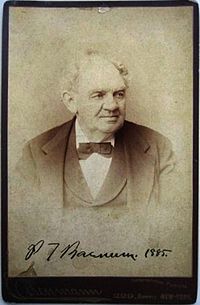In October of 1988, Ezra T. Benson, then prophet of the church, gave a speech that would become the defining characteristic of his presidency.
The talk was entitled “Flooding the Earth with the Book of Mormon.”
I was but a wee lad at the time, and so I recall having a primary activity where we wrote down our testimonies on paper, glued them into copies of the Book of Mormon, and sent them off to missionaries around the world to fulfill this prophesy.
When I served my mission, I discovered an astonishing thing– every apartment had stacks of these English copies of the Book of Mormon from this era, with testimonies in the front covers.

These testimonies are so common that you can find them on the internet. Go to Deseret Industries and pick up a few copies, and you’ll find a few of these on any given day. My house has 6.
It would only be after I came home that I would learn this was not unique to my mission, but, in fact, is pretty much the case across most missions.
What happened? Most of this explanation comes from various reviews of Daymon Smith’s Book of Mammon. To be clear, Daymon Smith was an anthropologist at the Church Office Building for 15 years. He knows his stuff, and had a very intimate look at the workings of the church:
- In 1981, the LDS Church released the ‘Quad’–a combination scripture set (complete with footnotes and chapter headings) that many Mormons use today. Initially, sales for the new scriptures were sluggish. The CEO of Deseret Book worried that the new emphasis on Jesus was to blame (the 1981 edition of the Book of Mormon was subtitled, “Another Testament of Jesus Christ”). The more likely culprit was Deseret Book itself, which heavily advertised the pricey leather-bound sets to the exclusion of cheaper ones.
- The warehouse suddenly had a lot of old copies of the Book of Mormon no one wanted to buy. Everyone wanted a quad with the fancy features.
- The warehouses refused to take in the new quads until the old copies of the Book of Mormon were sold. Doing otherwise would mean they’d take a loss.
You see, even though the church is a behemoth organization, each sub-organization operates independently. The warehouse would take a loss if the books gathered dust (warehouse space taken up is a cost in logistics calculations), and if the church bought them to free up the warehouse, that would be “inappropriately using tithing funds.” Since Deseret Book is “for profit,” they couldn’t be expected to eat the costs.
Then one day, an enterprising young lad/lass in marketing had a thought, and it was agreed to. “Have the members buy up the books.” Just because they paid for the initial printing of the book, and for the books to go to the warehouse, it didn’t mean you couldn’t charge members again for the same books.
- Local ward and stake budgets (including the primary budget, where I was) used the money to buy up copies of the Book of Mormon to send out instead of on local members and activities.
- The missionaries received tons of old books that they couldn’t possibly give out. Sometimes they built furniture out of the books, just to give you an idea of the volume.

Elder P.T. Barnum said, “There is a new member of the church born every minute.”
So why does this matter? It matters because the prophet spoke a message at the pulpit that equated to “the members are suckers, make them pay,” and it is still the defining message of his presidency. A warehouse logistics issue, and some stubborn managers not willing to take a loss, pushed members to open their pocket books.
That precedent should disturb any member.

Pingback: Tithing Bailout timeline | Exploring Mormonism
I remember those books. We had a bunch of them. The testimonies never achieved anything from investigators other than puzzled looks. The nearest thing to interest in the testimony was why they were always American families and never French ones. The French didn’t care that some family in the Western US gave them a book via Americans in France.
I didn’t know about the warehouse aspect of this, but the testimonies in the books probably had a net negative impact on investigators’ interest.
Pingback: 40 Talks in 40 Days – Preach My Gospel—the Unifying Tool between Members and Missionaries, Erich W. Kopischke | Exploring Mormonism
Pingback: The three-fold nature of the LDS Church: corporate, totalistic, and individual-growth by bwv549 - Mormon Bandwagon